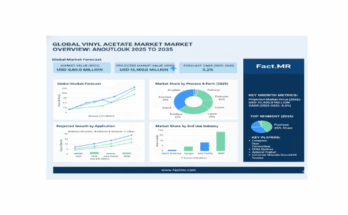The automotive human interface system (HMI) market is evolving rapidly as vehicles become smarter, more connected, and increasingly autonomous. HMI technologies bridge the interaction between drivers, passengers, and vehicle systems, enabling seamless communication, control, and safety. These systems include touchscreens, voice recognition, gesture control, displays, haptic feedback, and advanced infotainment interfaces.
As consumer expectations rise for intuitive, connected, and personalized driving experiences, automotive HMI is emerging as a crucial differentiator in vehicle design and performance. The market is driven by the integration of advanced driver-assistance systems (ADAS), digital cockpits, and electric and autonomous vehicles.
Market Overview:
Automotive HMIs enhance usability, comfort, and safety by allowing drivers to interact with vehicle systems efficiently. They integrate functions such as navigation, infotainment, climate control, communication, and vehicle diagnostics into centralized interfaces.
The market is propelled by technological advancements including high-resolution touchscreens, customizable instrument clusters, augmented reality displays, and voice-activated commands. Manufacturers are focusing on creating interfaces that reduce driver distraction, increase operational efficiency, and improve user satisfaction.
Safety regulations and consumer preferences are also shaping market development. HMIs are designed to support safe driving by providing intuitive alerts, feedback, and seamless integration with ADAS features such as lane departure warning, adaptive cruise control, and collision avoidance systems.
Regional Insights:
North America is a prominent market for automotive HMI, supported by advanced vehicle technologies, high consumer demand for smart cars, and the presence of leading automakers investing in digital cockpits and infotainment systems.
Europe follows closely due to stringent safety regulations, a focus on connected and autonomous vehicle technologies, and increasing adoption of premium vehicles with advanced HMI systems. Sustainability and energy efficiency considerations also influence interface design in European markets.
Asia-Pacific is experiencing significant growth, driven by expanding automotive manufacturing, urbanization, rising disposable income, and technological adoption in countries such as China, Japan, and India. This region is also embracing electric vehicles, which further boosts HMI adoption due to their reliance on digital interfaces and infotainment systems.
Latin America and the Middle East & Africa are gradually increasing adoption of HMIs as vehicles with connected technologies and digital cockpits enter these markets, supported by urban development, consumer awareness, and expanding vehicle portfolios.
Innovations and Regulatory Trends:
Innovation in automotive HMIs is centered around enhancing user experience, safety, and connectivity. Advanced interfaces now feature gesture recognition, eye-tracking, augmented reality displays, and AI-powered voice assistants. Haptic feedback and customizable dashboards improve usability and reduce driver distraction.
Regulatory standards play a key role in defining HMI design and functionality, ensuring that safety, visibility, and accessibility requirements are met. These guidelines ensure interfaces do not compromise driver attention while maintaining consistency with vehicle safety and electronic standards.
Sustainability and energy efficiency are also influencing market trends. Automotive HMIs are being designed with energy-saving displays, recyclable materials, and efficient electronics to align with global environmental and efficiency standards.
Key Trends & Forecast:
The automotive HMI market is shaped by several notable trends:
- Integration with Autonomous and Electric Vehicles: HMIs serve as the primary interface for vehicle control, navigation, and information in EVs and self-driving cars.
- Advanced Infotainment and Connectivity: Systems increasingly support smartphone integration, cloud connectivity, real-time navigation, and multimedia streaming.
- AI and Voice Recognition: Natural language processing, AI-based predictive features, and contextual awareness enhance usability and driver assistance.
- Augmented and Digital Displays: Heads-up displays, AR dashboards, and 3D instrument clusters improve situational awareness and safety.
- Personalization and User-Centric Design: Interfaces can be tailored to individual preferences, supporting multiple user profiles, interface themes, and accessibility features.
These trends reflect the market’s emphasis on safety, technology, and enhanced user experience to meet evolving consumer expectations.
Applications & End-Use Outlook:
Automotive HMIs are used across various vehicle types and functions:
- Passenger Vehicles: Provide intuitive access to infotainment, navigation, climate control, and communication systems, improving comfort and convenience.
- Commercial Vehicles: Assist drivers with fleet management, navigation, telematics, and vehicle diagnostics while enhancing operational efficiency and safety.
- Electric Vehicles: Enable digital dashboards, real-time energy monitoring, navigation, and connectivity, supporting the unique requirements of EV users.
- Autonomous Vehicles: Serve as the primary interface between passengers and vehicle systems, providing information, alerts, and control options.
The multifunctional role of HMIs ensures that vehicles are safer, more efficient, and technologically advanced, enhancing both driver and passenger experiences.
Competitive Landscape:
The automotive HMI market is highly competitive, with global suppliers, technology providers, and OEMs investing in research, design, and development to offer innovative solutions. Key strategies include collaboration with automotive manufacturers, development of advanced interface technologies, and integration of AI and connectivity features.
Companies are focusing on user experience, safety compliance, and digital innovation to differentiate their products. Partnerships, strategic alliances, and technology licensing play a critical role in accelerating product adoption and market expansion.
Conclusion:
The automotive human interface system market is poised for significant growth as vehicles become more connected, autonomous, and intelligent. With innovations in digital dashboards, voice control, augmented reality displays, and AI-powered interfaces, HMIs are redefining driver and passenger interactions.
Manufacturers and technology providers that prioritize safety, personalization, and seamless connectivity will lead the market. As vehicles continue to evolve, automotive HMIs will remain central to enhancing safety, convenience, and the overall driving experience.
Browse Full Report – https://www.factmr.com/report/21/automotive-human-interface-system-market



